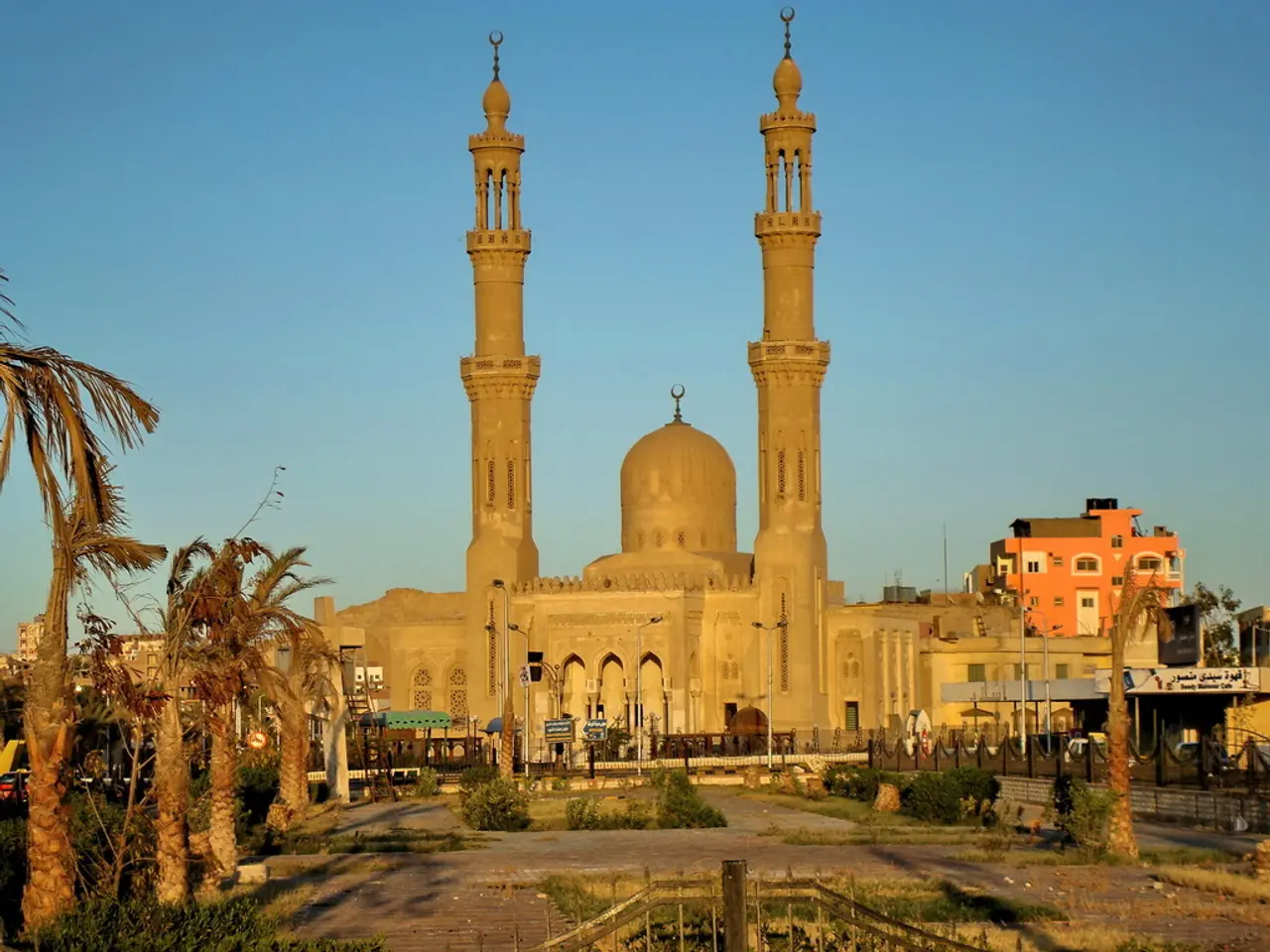Daring vacationers venture into Mardin's ancient Midyat amid scorching temperatures
**Midyat, Turkey: A Vibrant Haven of History and Culture**
Nestled in the southeastern province of Mardin, Turkey, the historic district of Midyat boasts a rich cultural and architectural heritage that continues to draw visitors from near and far. Despite the soaring summer temperatures, the town remains a captivating destination for those seeking an immersive journey through history and tradition.
### Architectural Marvels The heart of Midyat is adorned with ancient yellow limestone buildings, tightly clustered on a hillside and interwoven with narrow, winding streets. This labyrinthine layout offers a captivating glimpse into the past, with stunning vistas over the Mesopotamian plains.
A central architectural highlight is the **Ulu Cami** (Great Mosque of Mardin), constructed in 1176 during the Artuqid period. The mosque is renowned for its segmented dome, a hallmark of Artuqid architecture, and its remaining minaret, intricately carved with Kufic and Arabic script. The mosque, built on or converted from a Syriac church site, serves as a testament to Midyat's layered religious history.
In addition to the Ulu Cami, Midyat is home to numerous Christian churches, including the Mar Hırmız Chaldean Catholic Church, built in 397 AD, and the Mardin Protestant Church, established by American missionaries in the 19th century. These historic places of worship underscore Midyat’s diverse Christian heritage and its role as a crossroads of civilizations.
Midyat's mosques exhibit distinct Arabian architectural influences, reflecting the town's 450 years under Arab rule (640–1104 AD).
### Cultural Richness Midyat's unique multicultural atmosphere is a result of the coexistence of Syriac Orthodox Christians, Arabs, and Turks over centuries. This diversity is evident in the religious structures, languages, manuscripts, and local customs that permeate the town.
The town is also renowned for its traditional silver workshops, where artisans create intricate silverwork, adding to the cultural experience.
### Tourist Appeal With its "open-air museum" quality, Midyat offers an unparalleled journey through time. Tourists are drawn to the town's historic atmosphere, architectural marvels, and the opportunity to immerse themselves in its vibrant traditions.
Visitors can wander through the historic streets, browse artisan markets, and take photographs of the key attractions, including stone houses, ancient churches, mosques, and traditional silver workshops.
In cafés that resemble those used by locals centuries ago, tourists can sample the local cuisine and tea culture, further enhancing their cultural experience. From the scenic views of the Mesopotamian plains and ancient cityscape, Midyat offers panoramic vistas that leave a lasting impression.
Despite the intense summer heat, Midyat continues to attract visitors eager to explore its heritage and vibrant traditions. Local tour guide Şehmus Yıldız notes that people are drawn to Midyat to experience its atmosphere and history.
In essence, Midyat's appeal lies in its unique synthesis of ancient architecture, multicultural religious heritage, and evocative landscapes, making it a must-visit destination for travelers interested in history, architecture, and culture.
- For those captivated by cultural travel, Midyat's stunning cityscape is an immersive journey through history and tradition, showcasing its architectural marvels and vibrant lifestyle.
- Embracing the charm of this tourist-attracting destination, the town offers visitors a unique blending of heritage, architecture, and cultural experiences, particularly in its traditional silver workshops and continued coexistence of various religious groups.




